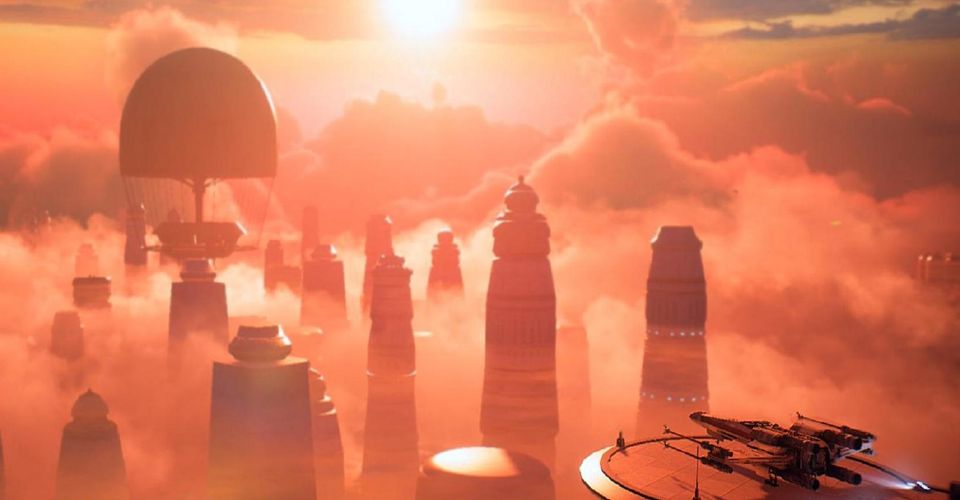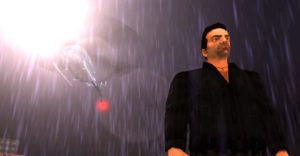Star Wars: 10 Things You Didn’t know about Bespin

Bespin is one of the most cherished planets in the Star Wars universe as a major setting in Empire Strikes Back. The Tibanna Gas mining colony is home to Cloud City, Lando Calrissian, and some stunning sunsets. But within the city in the clouds lies some interesting tidbits the movies missed out on.
There’s more to the city in the clouds than Lando’s smooth-talking and creepy carbonite freezing chambers. With that, here are 10 Things You Didn’t know about Bespin from Star Wars
10 Tibanna Gas Atmosphere

Bespin is comprised entirely of gas with no solid ground, making it one of the only completely gaseous planets in the Star Wars universe. The gas, known as Tibanna, is harvested by miners and is used as a coolant for weapons systems in starships. Not only that but the gas is highly explosive, as seen in Star Wars: The Clone Wars animated series in the episode Rookies. After being harvested Cloud City would then process the collected gas and process it to be later exported. Bespin may beseem like an off the map destination, but people endure the long trek for its resources that sell for a pretty price.
9 Ugnaught Central

These pesky workers earned themselves a nasty reputation because of their actions in Empire Strikes Back. However, Ugnaughts are some of the hardest working races in the galaxy.
Talk about keeping their noses to the grindstone, the Ugnaughts seen in Cloud City were originally slaves until being freed by Lord Ecclessis Figg, the creator of Cloud City. In exchange for their freedom, Figg employed the help of the Ugnaughts to build the city which explains the reasoning behind their stay.
8 Discovery

The Mandalorian features an Ughnaught character, Kuill, which is fitting considering the discovery of the planet is correlated to the race of Din Djarin. Bespin was discovered during the Old Republic Era while the Mandalorian War ensued. A small tibanna operation was established until a group of Mandalorian’s destroyed it until it was colonized years later with the formation of Cloud City. Since it’s discovery the planet has been used as a refuge and was famously employed by the Republic for orphaned children during the Clone Wars.
7 Empire Interest

Despite being far from the reach of the empire, Bespin was unfortunately brought under Imperial control. However, Tibanna was not the only factor that played into this but rather it’s storage abilities.
Seeing that Bespin and its people posed no threat, the empire used the planet to store bacta, a healing chemical seen in Empire Strikes Back to restore Luke’s wounds. Bespin was integral to the Empire’s fleet as both a source of Tibanna to power their vehicles and bacta storage for troopers.
6 Home Species

Though not seen in the movies, Bespin hosts some creatures of their own despite the gaseous state the planet exists in. The Beldon, a jellyfish-like floating creature excreted tibanna gas that miners later harvested. These creatures were so important to Bespin’s economy that laws were instated prohibiting the act of hunting them. Because of the resource they excrete, Cloud City officials did everything they could to ensure they never became endangered. While these larger creatures resided in the upper atmosphere of the planet, microscopic plankton and algae floated along in the atmosphere, giving the planet just a hint of life.
5 Original Name

Like the name Mace Windu, Bespin has been around since the early drafts of Star Wars in 1974. Concept art from Ralph McQuarrie shows Alderaan as a gaseous planet like Bespin is in Empire Strikes Back. Even further, Cloud City was an actual establishment on Alderaan as well, until it was later switched to Bespin.
As fans know, Alderaan, not a gaseous planet but a solid one and was the home of Princess Leia until it was destroyed by the Death Star. Had the names been the switch, Leia’s childhood would have been much, much different.
4 Endless Levels

Cloud City has a unique shape, holding a city on a plate-like structure with a pole protruding downward from its center. The city itself may not be as big as Coruscant but it boasts 392 levels that are accessible. From the surface to the very end of the bottom-most layer, Cloud City is a rather complicated matter as both a city that houses citizens and a mining facility for the rare Tibanna gas.
3 Always Two, There Are

Cloud City usually takes the title when it comes to capital cities but it’s not the only one. Ugnograd, home of the Ugnaughts, is another major floating colony on Bespin. This paradise was considered a retirement area for the Ugnaught workforce after their tenure in Cloud City.
The colony itself was situated just a kilometer below Cloud City, making it easily accessible for Ugnaughts looking to leave. Retirement has never looked easier, just a hop below the clouds.
2 Tibannopolis

Kind of like Metropolis, Tibannopolis (named after the famous Tibanna gas) was the second-largest city next to Cloud City. As another mining colony, Tibannaopolis was in constant competition with Cloud City until it’s inevitable downfall during the Clone Wars. The lack of production and exports forced its citizens to leave, looking elsewhere for work while the city itself remained abandoned. Not all business ventures work out, and Tibannopolis is a prime example of that.
1 Light’s, Camera, Action

As many can tell, Bespin is one of the most beautiful destinations in the Star Wars universe, making it a popular tourist attraction for visitors. Not only was this a major part of their economy, but the luxury hotels and casinos (happily supported by Lando Calrissian being the gambler he was) also provided ample money flow for the mining colony. Even Cloud Car pilots were famous for taking tourists on tour rides around the city for a price, but as they’ll tell you, it’s worth every credit.
About The Author
















